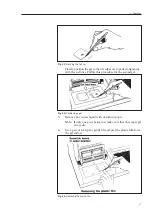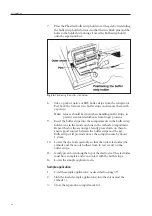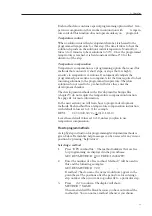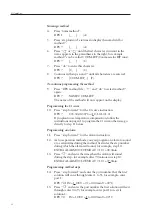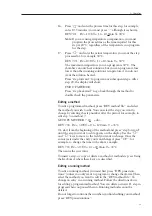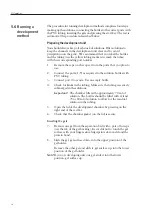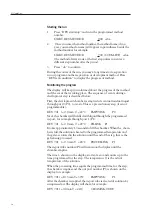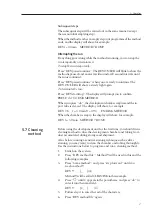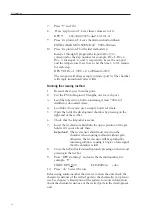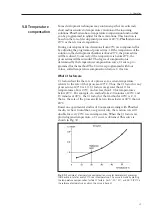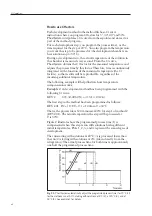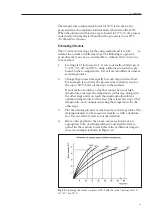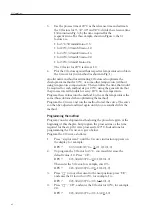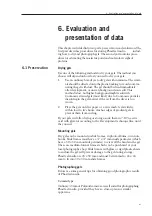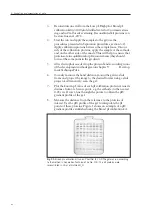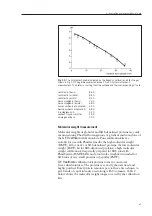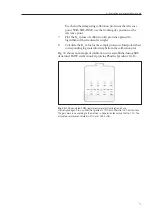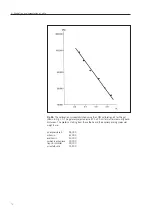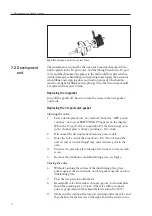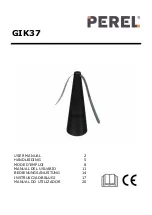
61
The temperature compensation factor for 50°C is 2.6, that is, the
process will reach completion 2,6 times faster than it would at 20°C.
When the solutions for this step are pre-heated to 50°C (4), the process
ends exactly 2.6 times faster than when the, process is run at 20°C
(12.0 min/2.6 = 4.6 min).
Estimating Ct factors
The Ct curve is an average for the entire method and it can be es-
timated in a number of different ways. The following is a general
procedure that you can use and modify to estimate the Ct curve for
your method.
1.
Leaving all Ct factors set to 1.0, run your method (all steps) at
5°, 20°, 30°, 40° and 50°C, using solutions pre-cooled or pre-
heated to these temperatures. Use at least two different times at
each temperature.
2.
Change the process time equally for each step in the method.
For example, if you halve the process time in the first step for
the run at 40°C, halve all the steps in the method.
If your method contains a step that cannot he run at high
temperatures, increase the temperature of this step along with
the other steps until you reach the maximum allowable or
optimum temperature for that step. Then, leave the step at that
temperature, and continue increasing the temperature for the
other steps.
3.
Plot the staining intensity versus time for each temperature. The
staining intensity can be measured visually or with a densitom-
eter. Use an arbitrary scale for visual detection.
4.
Draw a line parallel to the x-axis, across each curve at an
appropriate O.D. or staining intensity, and read the time re-
quired for the reaction to reach this value at different tempera-
tures. An example is shown in Figure 32.
Fig. 32
. Comparing the rate at a process at 20°C with the rate of that process at 5°,
30°, 40°, and 50°C.
5. Operation

